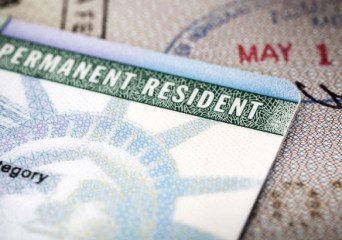
Table Of Contents
- Travel To Europe From US: What Are The New ETIAS Requirement?
- Is a Visa Required for Americans Traveling to Europe?
- What Do I Need To Travel To Europe From US?
- Is Medical Insurance Necessary for American Tourists in Europe?
- What Do You Need To Travel To Europe From US? ETIAS Requirements?
- How Can You Apply For ETIAS As An American Travelling To US?
- Travel From US To Europe Where Is Passport Needed?
- Why Do Americans Require ETIAS For European Travel?
- How Is My Information Put To Use By ETIAS?
- To Conclude
What Are The New ETIAS Requirements For Travel To Europe From US
Are you thinking of Travel to Europe from US? Well, here us out.
In the near future, individuals holding US passports will require ETIAS for their European travels. The European Travel Information and Authorisation System is set to become operational starting in 2025.
ETIAS serves as the fresh travel authorization. It is necessary for Americans and other non-EU citizens exempt from visas, be it F2 Visa or US Work Visa. Therefore, when they are travelling to various European countries like the popular destinations of France, Italy, and Spain, this will apply.
For brief visits, American citizens can maintain their visa-free access to Europe by obtaining ETIAS.
Travel To Europe From US: What Are The New ETIAS Requirement?
Heading to Europe from the US is about to change big time. Come 2024, around 1.4 billion people, including folks from the States, will have to secure a special pass to step into the European Schengen area. It’s all part of a worldwide push to amp up security.
This whole switcheroo is thanks to the European Travel Information and Authorisation System (ETIAS). Approved in 2016, the program got delayed from its 2022 kickoff due to a bunch of hurdles.
Back in those days, travel to Europe from US was not possible without thinking “pandemic, chaos and not enough setup in place”. However, even if we don’t have the exact date nailed down for Travel to Europe from US, it’s on the calendar for 2024.
Once ETIAS gets going, travelers from countries that used to dodge visas, like Americans and Brits, will need to hop through a few hoops. Thus, they will have to apply for this travel green light and shell out a small fee.
Therefore, this new requirement is the deal for anyone looking to hang out in these countries for less than 90 days.
Is a Visa Required for Americans Traveling to Europe?
Americans who fulfill the ETIAS criteria aren’t required to obtain a visa when visiting Europe. Consequently, individuals holding US passports can journey to Europe without a visa for:
Short stays of up to 90 days within a 180-day timeframe
Purposes such as tourism, business trips, and short-term studies
Visa-exempt American travelers must complete an ETIAS application.
To extend stays beyond 3 months or engage in work within Europe, Americans need to possess a visa or residency permit.
What Do I Need To Travel To Europe From US?
Here’s what Americans require for visits lasting up to 90 days.
- A passport valid for 3 months post-exit from the Schengen Area.
- ETIAS starting in 2025.
For stays exceeding 90 days, make sure to review the specific requirements for your chosen European destination.
Is Medical Insurance Necessary for American Tourists in Europe?
ETIAS doesn’t mandate medical insurance. Proof of health insurance isn’t necessary for the application process.
Yet, we strongly recommend for all American travelers to secure insurance. This should encompass medical emergencies and other incidents that may arise out of travel to Europe from US.
What Do You Need To Travel To Europe From US? ETIAS Requirements?
ETIAS is a requirement for entry into the Schengen Area, which consists of a group of 23 European countries.
- Slovenia
- Greece
- France
- Latvia
- Czech Republic
- Belgium
- Portugal
- Germany
- Malta
- Spain
- Netherlands
- Estonia
- Hungary
- Poland
- Finland
- Luxembourg
- Croatia
- Austria
- Denmark
- Sweden
- Italy
- Lithuania
- Slovakia
ETIAS is necessary for Non-EU Member States. These countries include the following.
- Norway
- Iceland
- Switzerland
- Liechtenstein
ETIAS is a requirement for Non-Schengen EU States. Therefore, this list includes the following countries.
- Romania
- Cyprus
- Bulgaria
How Can You Apply For ETIAS As An American Travelling To US?
The process for Americans to apply for ETIAS to travel to Europe from US involves an online application. Moreover, you will need to submit the fees, complete the digital form, and send in the application.
Therefore, the application form will request various details.
- Passport number
- Date, place, and country of birth
- Current address
- Travel to conflict areas
- Nationality
- Criminal records
- Contact phone number
- Name and surname
- Passport issue/expiry date
- Email address
Travel From US To Europe Where Is Passport Needed?
US citizens planning to travel to Europe must possess a valid US passport. Moreover, please make sure that the password remains valid for at least three months after your planned departure from the Schengen Area. The passport should not be older than ten years.
Starting from May 2025, they will need to obtain a special travel authorization known as ETIAS to enter the Schengen area of Europe. ETIAS has a link to their passport and grants permission for short stays of 90 days or less.
Additionally, the application for ETIAS will be accessible on the ETIAS website’s application section once it becomes operational. However, there us no confirmation on the exact launch date for ETIAS.
Why Do Americans Require ETIAS For European Travel?
Americans need ETIAS because they don’t need a visa to enter the Schengen Area. Thus, this rule applies to citizens of certain non-EU countries like the UK, Australia, and Japan.
ETIAS checks travelers before they reach Europe. Therefore, this helps enhance security by identifying potential threats to the Schengen Area.
How Is My Information Put To Use By ETIAS?
When you fill out the ETIAS form, the authorities compare these details with security databases.
- Schengen Information System (SIS): It identifies suspected criminals, missing individuals, and stolen items.
- Visa Information System (VIS): This shares visa data.
- Eurodac: It stores fingerprints of asylum seekers and irregular migrants.
Additionally, if there’s an alert in the system, European authorities review the application manually. They then decide whether to approve the travel authorization.
To Conclude
Thus when trying to travel to Europe From US, the data on ETIAS applications stays secure. It is only accessible to authorized personnel. Stringent technology safeguards the information to prevent unauthorized access.
ETIAS aligns with European laws and fundamental rights, requiring Americans to apply for it from 2025 onward when traveling to Europe.
Once issued, the ETIAS is valid for three years or until the passport linked to it expires, whichever comes first, exclusively tied to the passport used during application.
For Americans traveling across various European countries on a single trip, a single ETIAS suffices as it covers the entire Schengen Area. Yet, an approved ETIAS doesn’t guarantee entry. Thus, it only permits travel within Schengen countries, with the final entry decision made by immigration officers.
ETIAS is digitally linked to your passport, removing the need for a printed copy. However, remember to travel with the passport used for application.
Travelers from the US to Europe need to adhere to various regulations regarding weapons, tobacco, alcohol, currency, and other declarations. It’s crucial to stay updated with the latest immigration rules.
US citizens who don’t meet ETIAS requirements must acquire a visa for Europe. Visa applications typically demand proof of accommodation, round-trip or onward flight tickets, financial means to cover the stay, Schengen-area medical coverage, and a recent passport-sized photo.
It’s advisable to initiate visa applications several weeks prior to the planned travel date.
Read Also:







